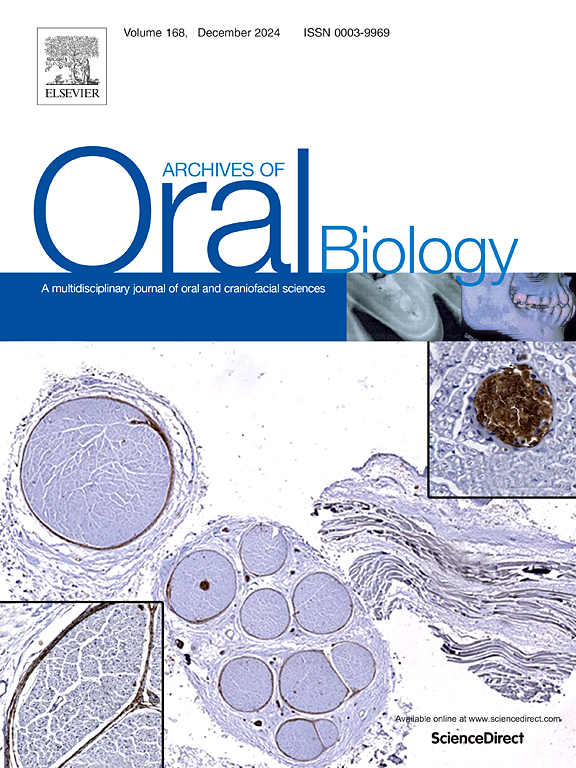Chronic stress and depression impact on tongue and major sublingual gland histology and the potential protective role of Thymus vulgaris: An animal study
IF 2.2
4区 医学
Q2 DENTISTRY, ORAL SURGERY & MEDICINE
引用次数: 0
Abstract
Objectives
Reporting the histological effects of chronic stress on certain oral tissues, as well as the capacity of Thymus vulgaris (thyme) to protect tissues from stress and link both serum cortisol and serotonin levels.
Methods
30 rats were randomly divided into a trio of groups: normal control (no treatment), stress group (chronic stress without treatment), and treatment group (chronic stress treated with thyme at a dose of 200 mg/kg BW orally via needle gavage daily for 21 days). At the end of the experiment, tongues and major sublingual glands (SLGs) were surgically removed and processed for histological and histochemical studies. Blood samples were taken shortly before scarification for the biochemical study of cortisol and serotonin serum levels.
Results
Examination of tongue and SLG sections of the stress group indicated significant alterations in histology and changes in SLG secretion. An examination of tongue and SLG histological sections of the thyme-treated group are showed an improvement. Chronic stress raises cortisol serum levels and lowers serotonin serum levels.
Conclusions
Chronic stress causes alteration of the tongue and major SLG histology, as well as changes in SLG secretion. Thyme may protect tissues from stress, and there is a relation between cortisol and serotonin levels.
慢性压力和抑郁对舌头和主要舌下腺组织学的影响以及普通胸腺的潜在保护作用:一项动物研究。
目的:报告慢性应激对某些口腔组织的组织学影响,以及百里香(thyymus vulgaris)保护组织免受应激的能力,以及血清皮质醇和血清素水平的联系。方法:将30只大鼠随机分为3组:正常对照组(未处理)、应激组(慢性应激组,未处理)、治疗组(慢性应激组,百里香按200 mg/kg BW剂量灌胃,每日灌胃,连续21 d)。实验结束时,手术切除舌和主要舌下腺(slg),进行组织学和组织化学研究。在划伤前不久取血样进行皮质醇和血清5 -羟色胺水平的生化研究。结果:应激组舌和舌g切片检查显示组织学和舌g分泌明显改变。百里香治疗组的舌部和SLG组织学切片检查显示改善。慢性压力会提高血清皮质醇水平,降低血清血清血清素水平。结论:慢性应激可引起舌和主要SLG组织学改变,以及SLG分泌的改变。百里香可以保护组织免受压力,皮质醇和血清素水平之间存在联系。
本文章由计算机程序翻译,如有差异,请以英文原文为准。
求助全文
约1分钟内获得全文
求助全文
来源期刊

Archives of oral biology
医学-牙科与口腔外科
CiteScore
5.10
自引率
3.30%
发文量
177
审稿时长
26 days
期刊介绍:
Archives of Oral Biology is an international journal which aims to publish papers of the highest scientific quality in the oral and craniofacial sciences. The journal is particularly interested in research which advances knowledge in the mechanisms of craniofacial development and disease, including:
Cell and molecular biology
Molecular genetics
Immunology
Pathogenesis
Cellular microbiology
Embryology
Syndromology
Forensic dentistry
 求助内容:
求助内容: 应助结果提醒方式:
应助结果提醒方式:


